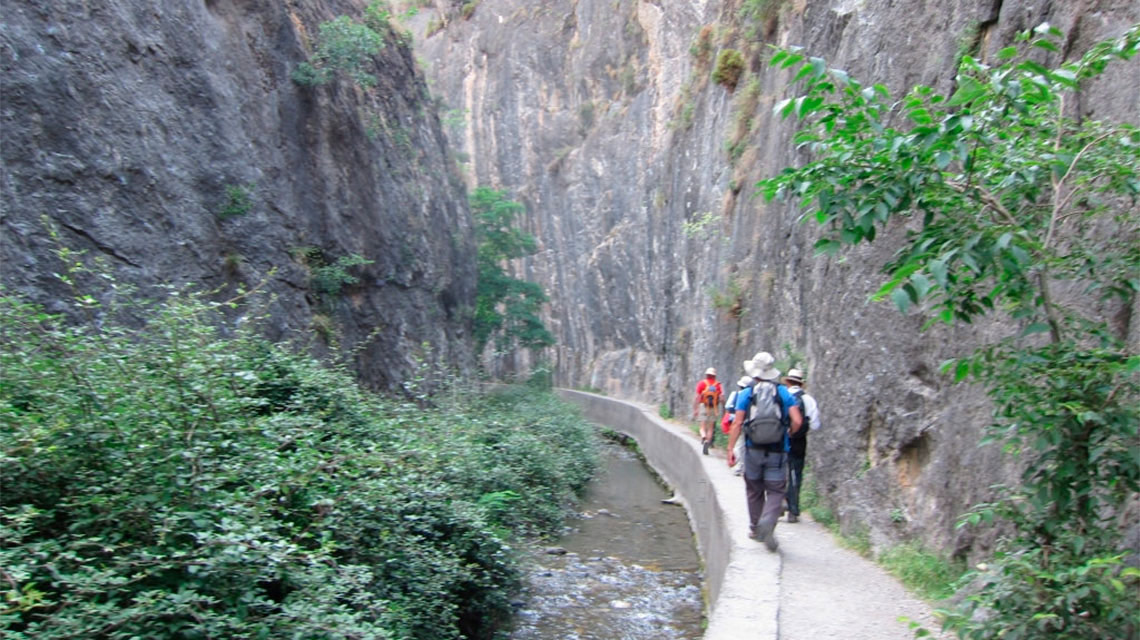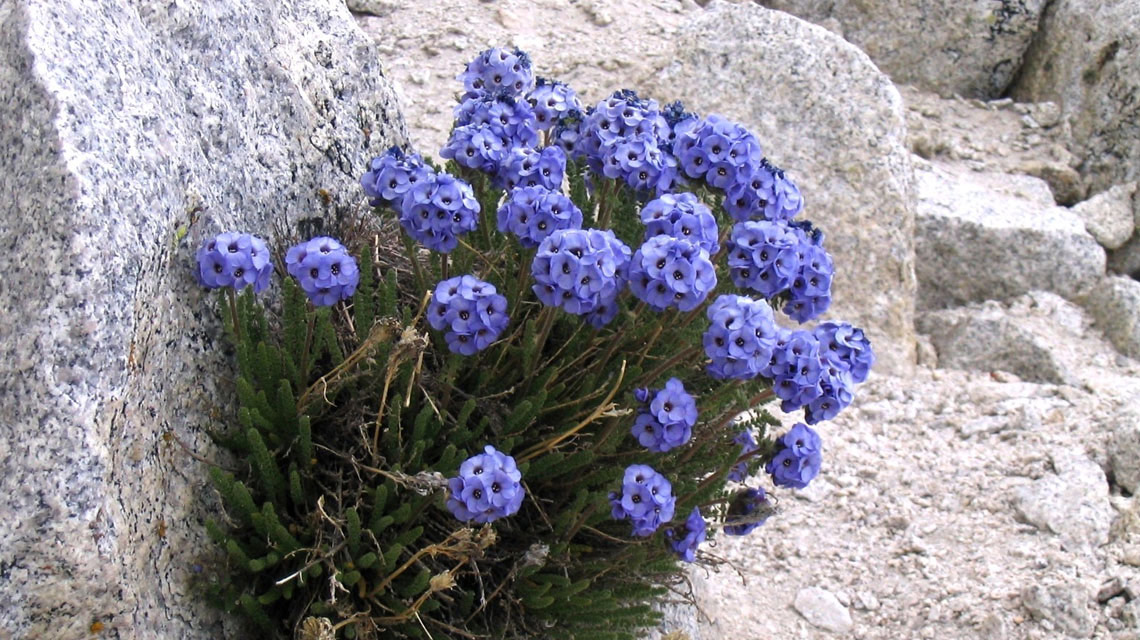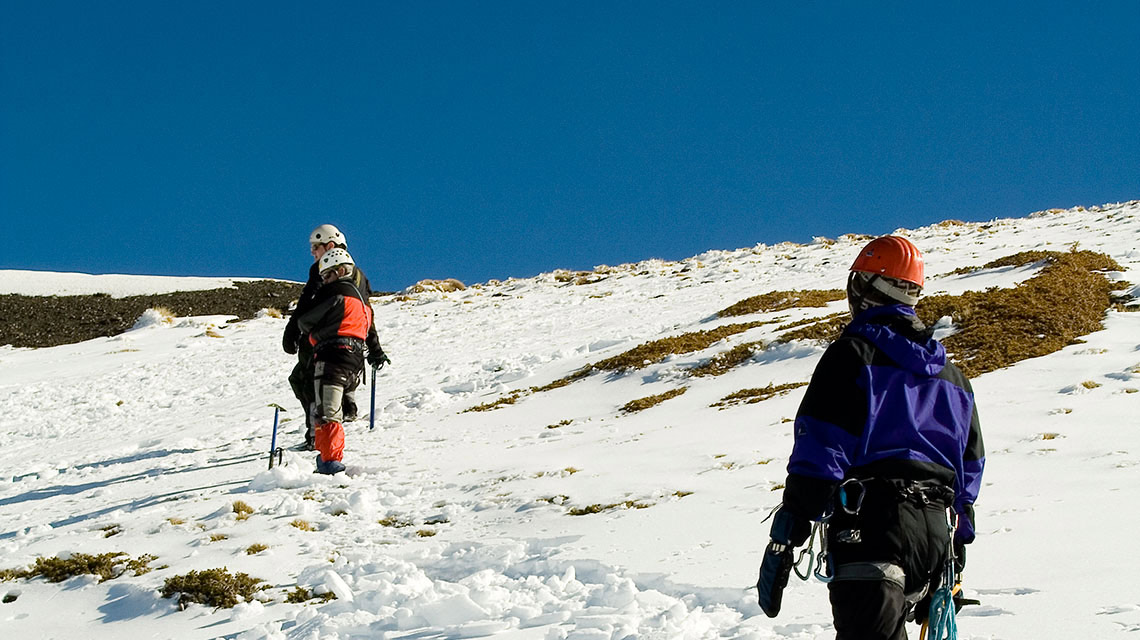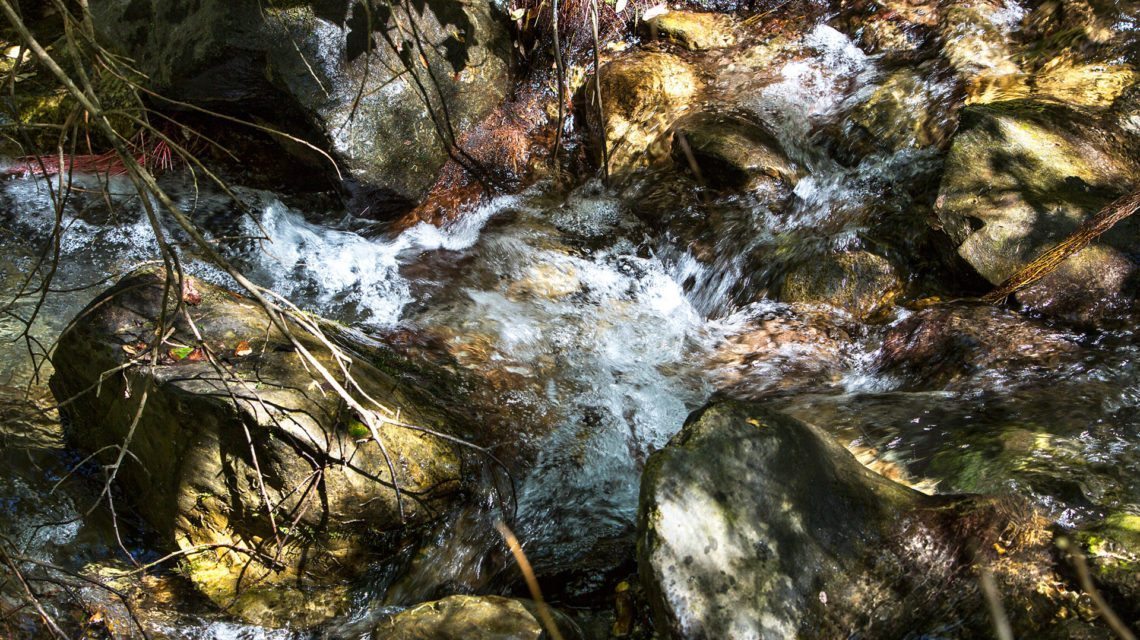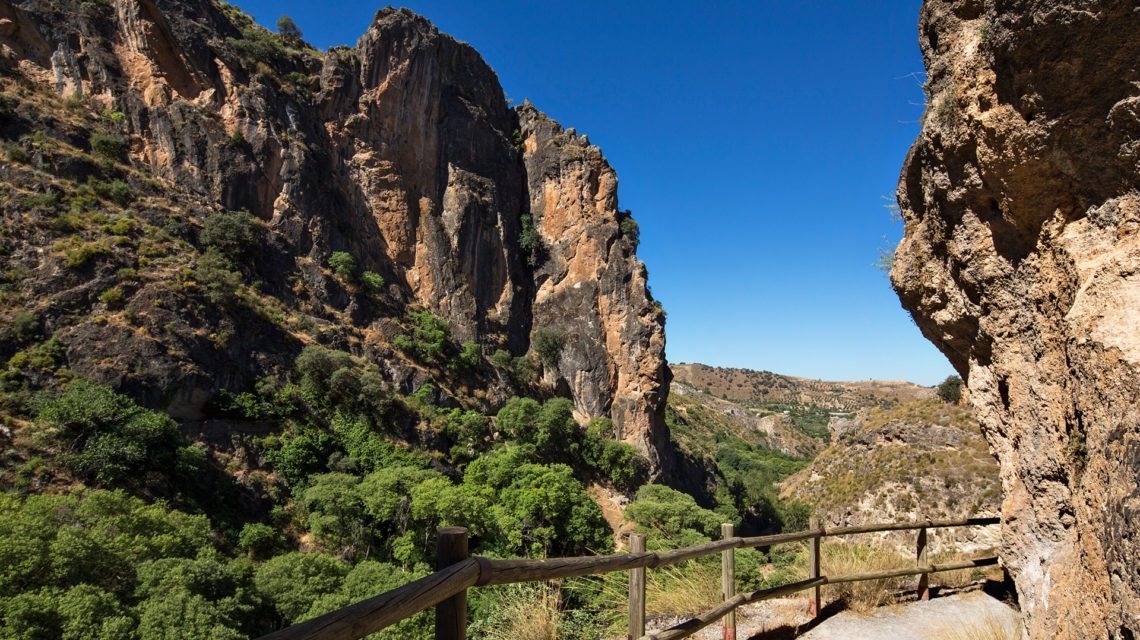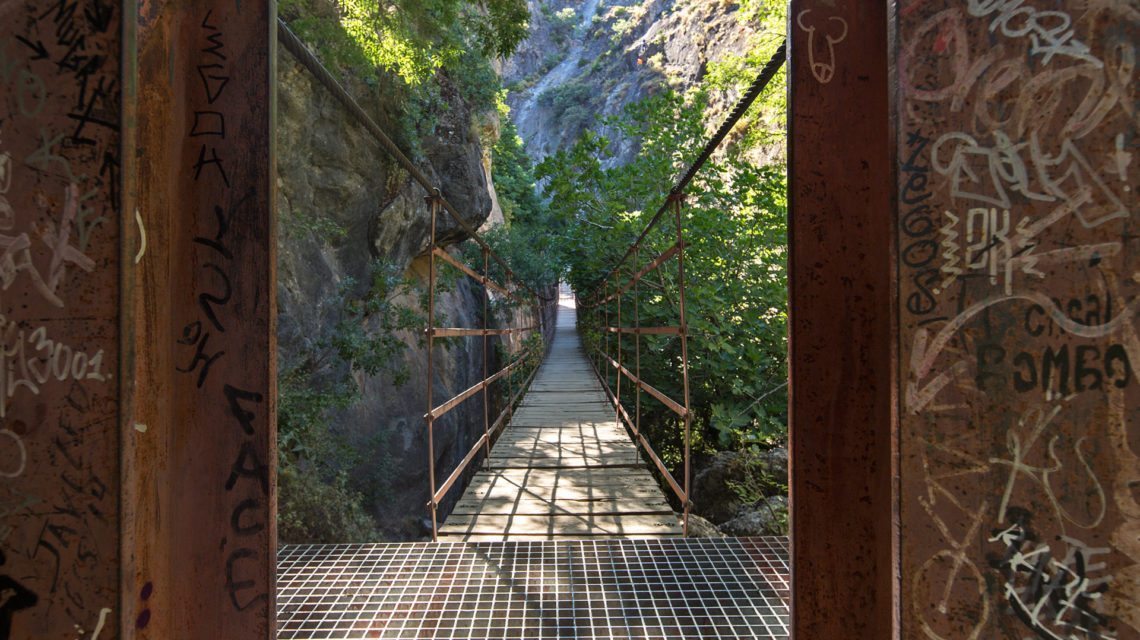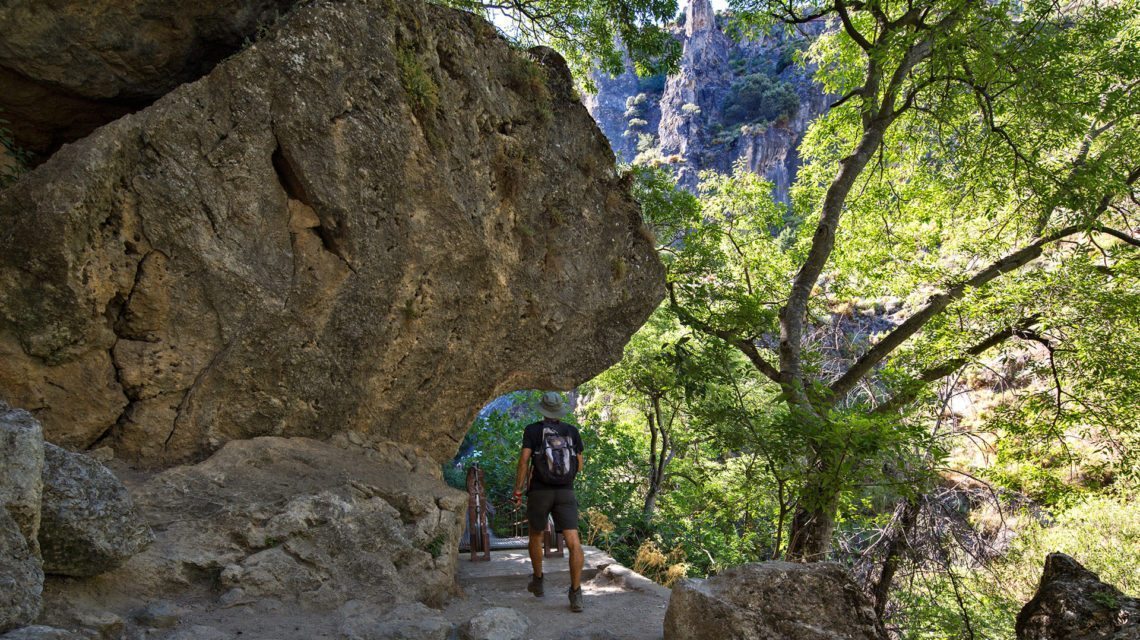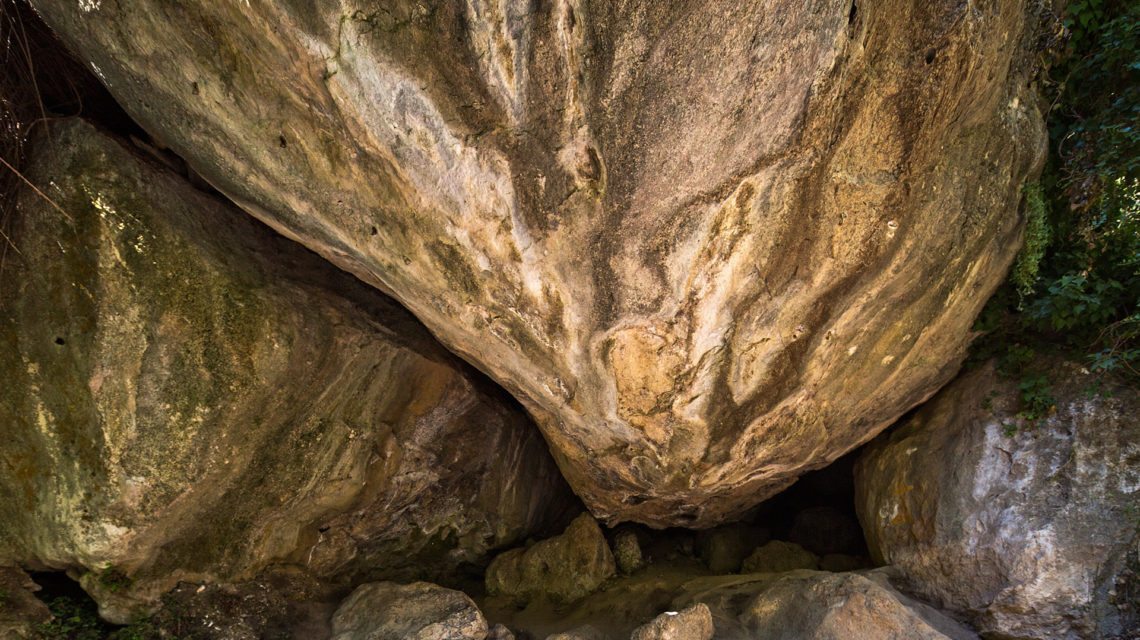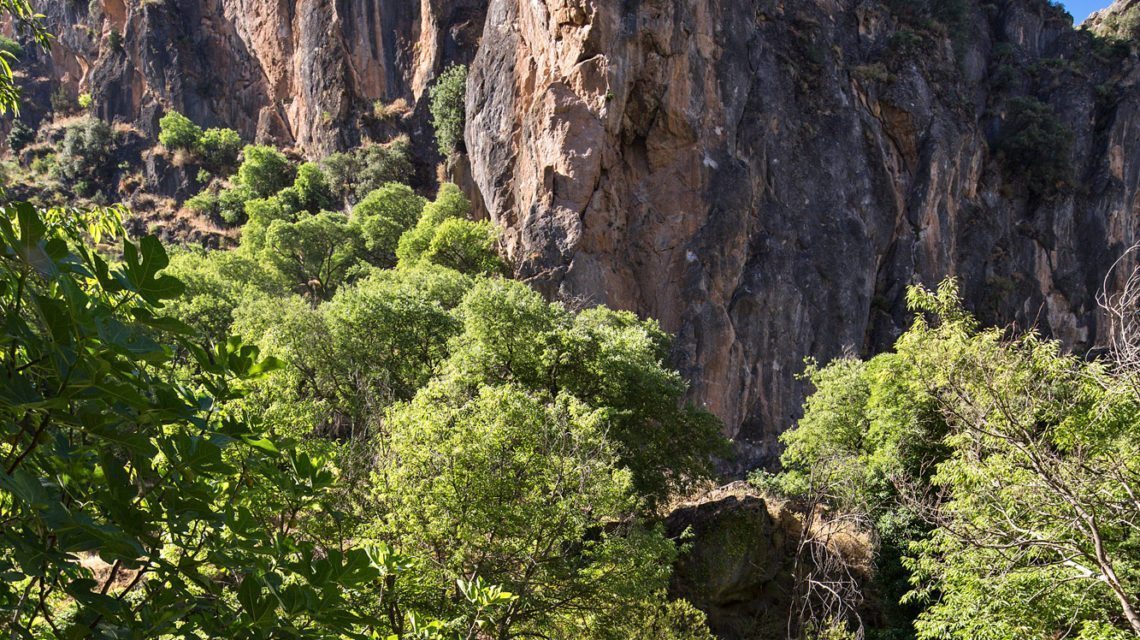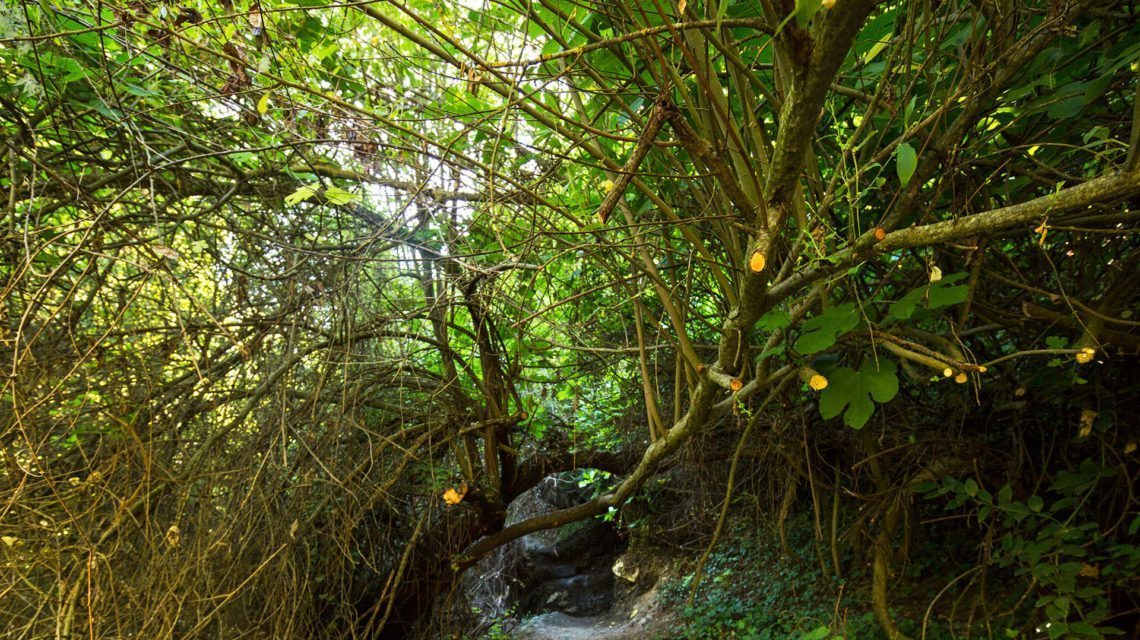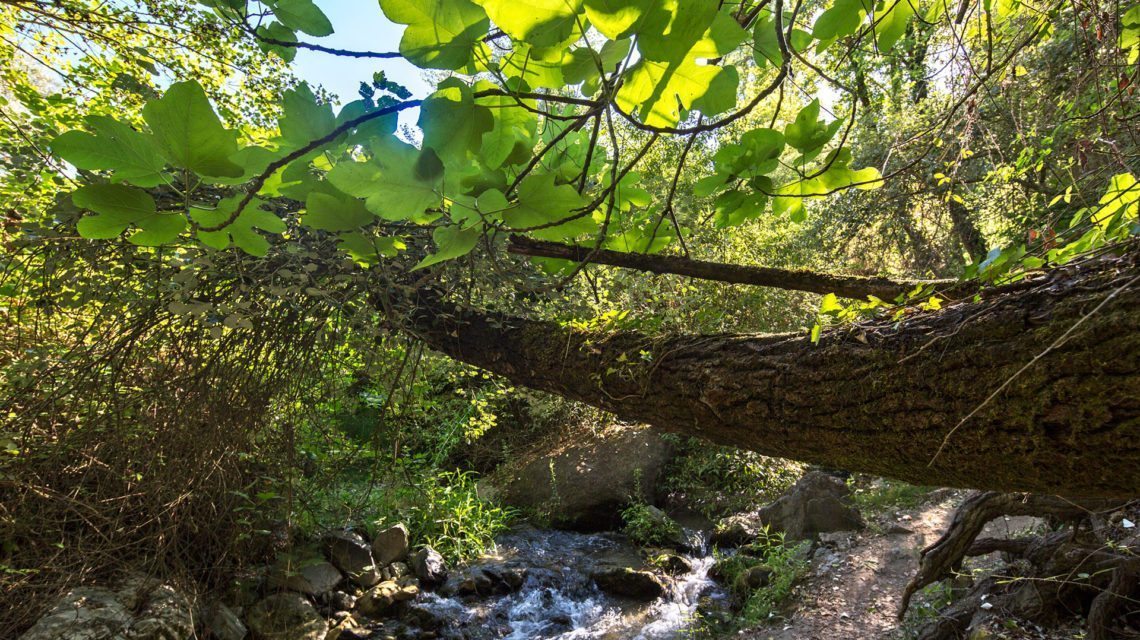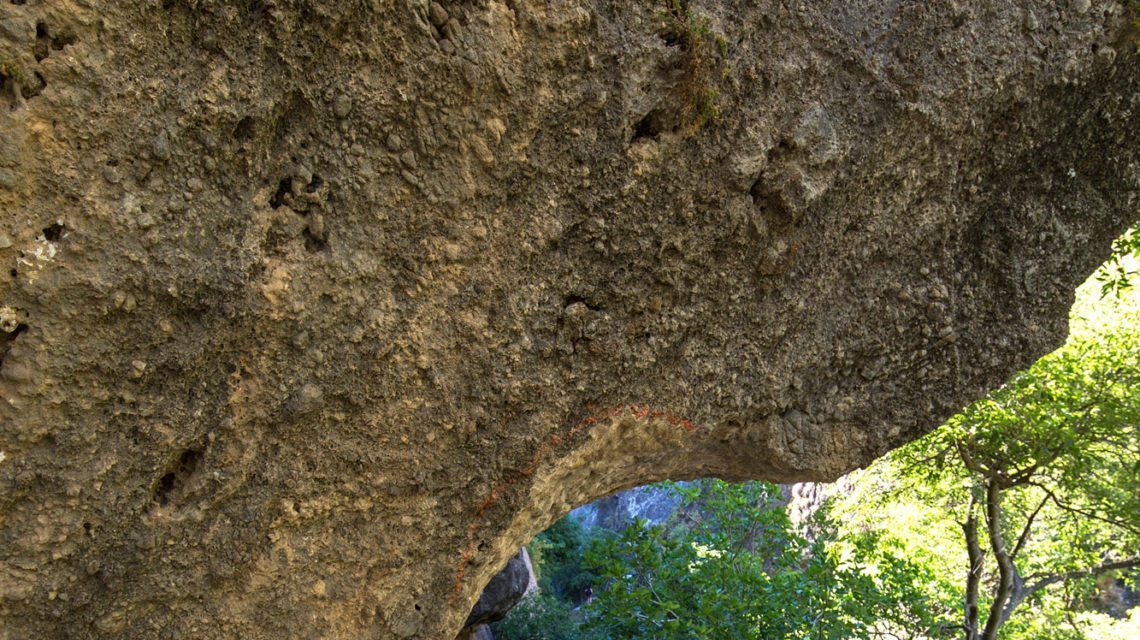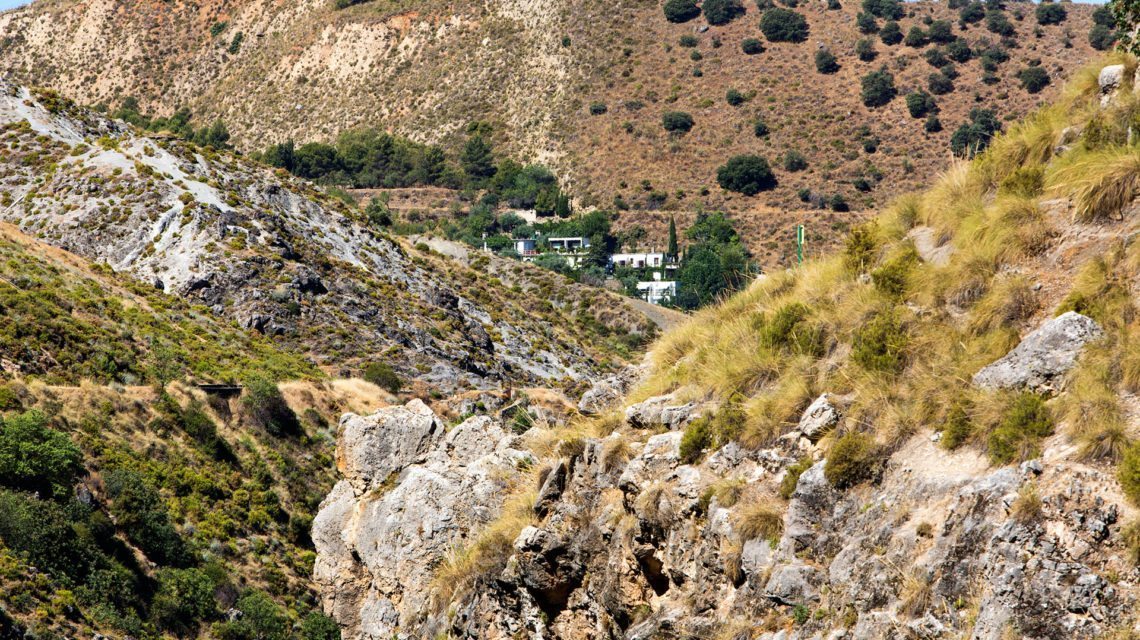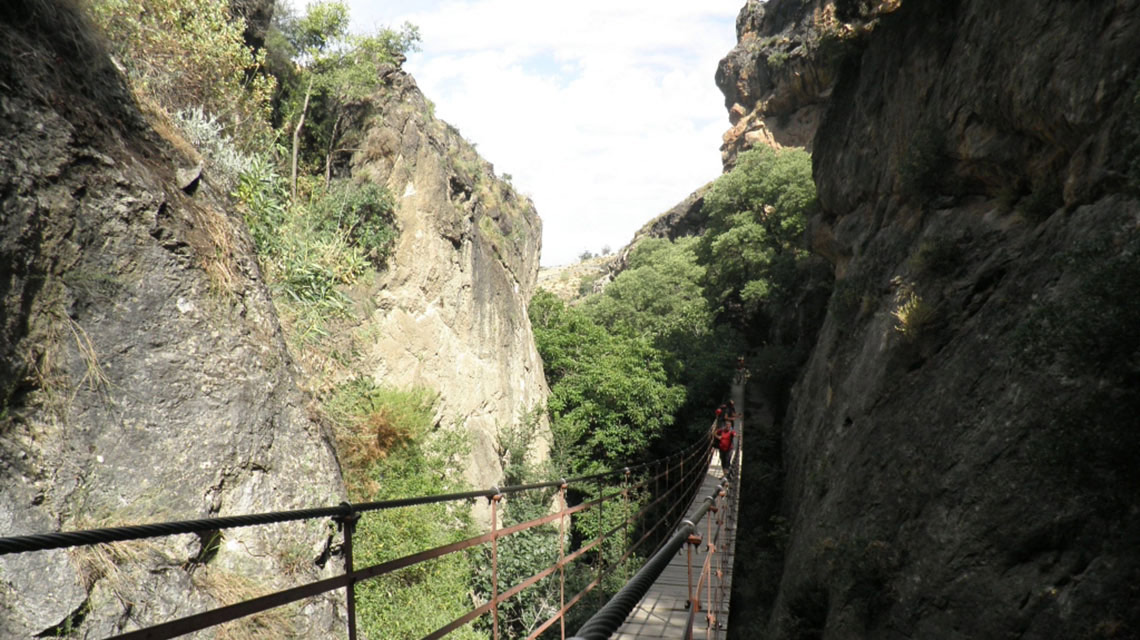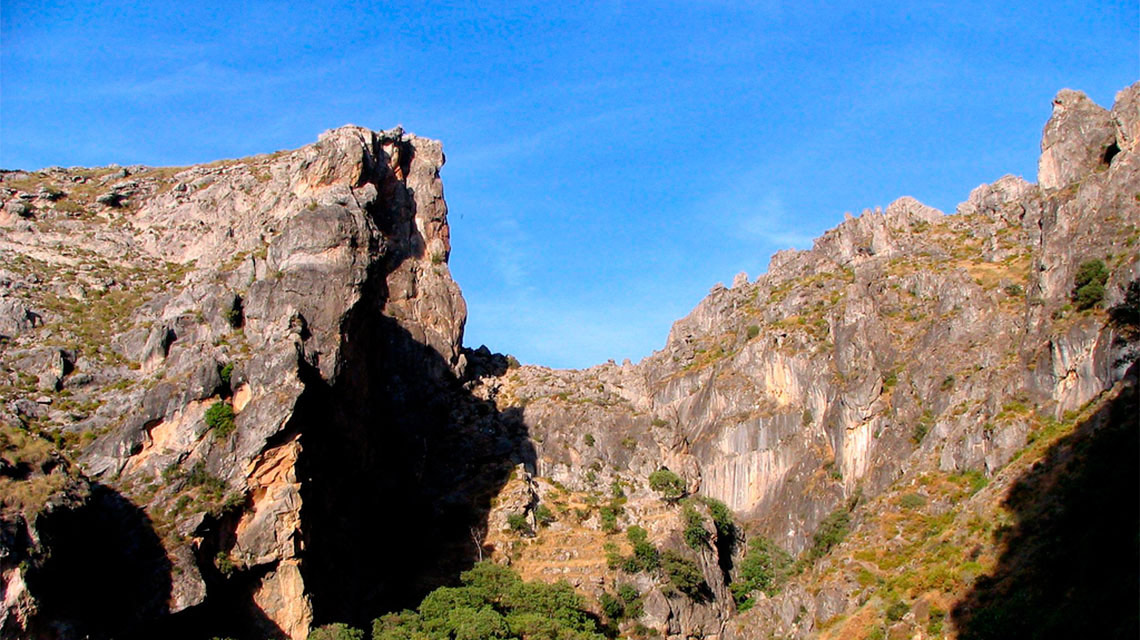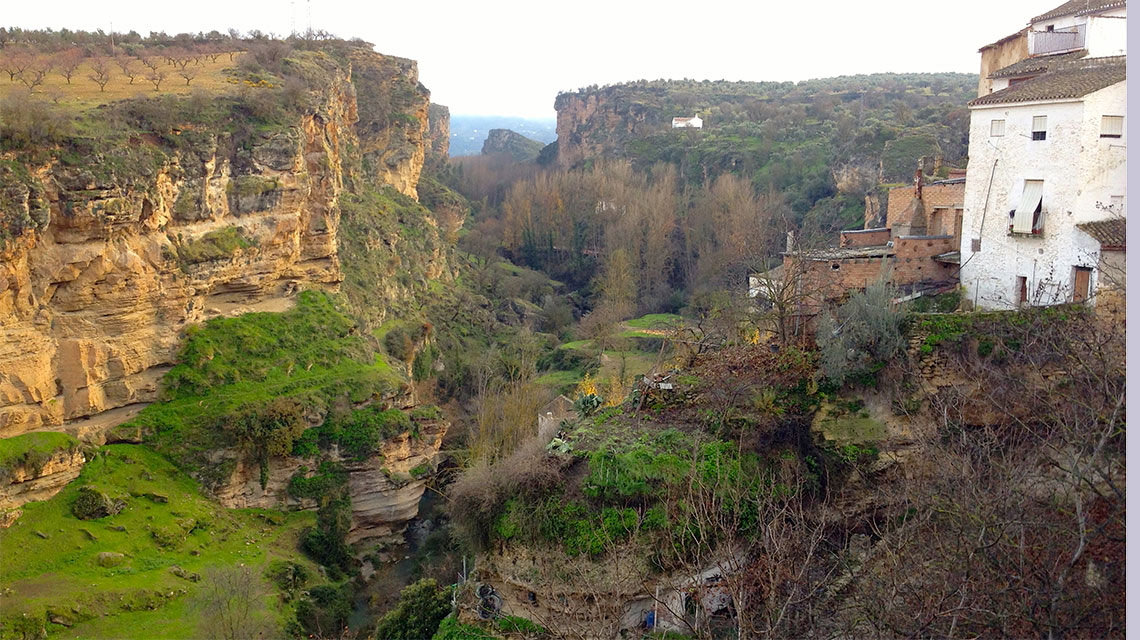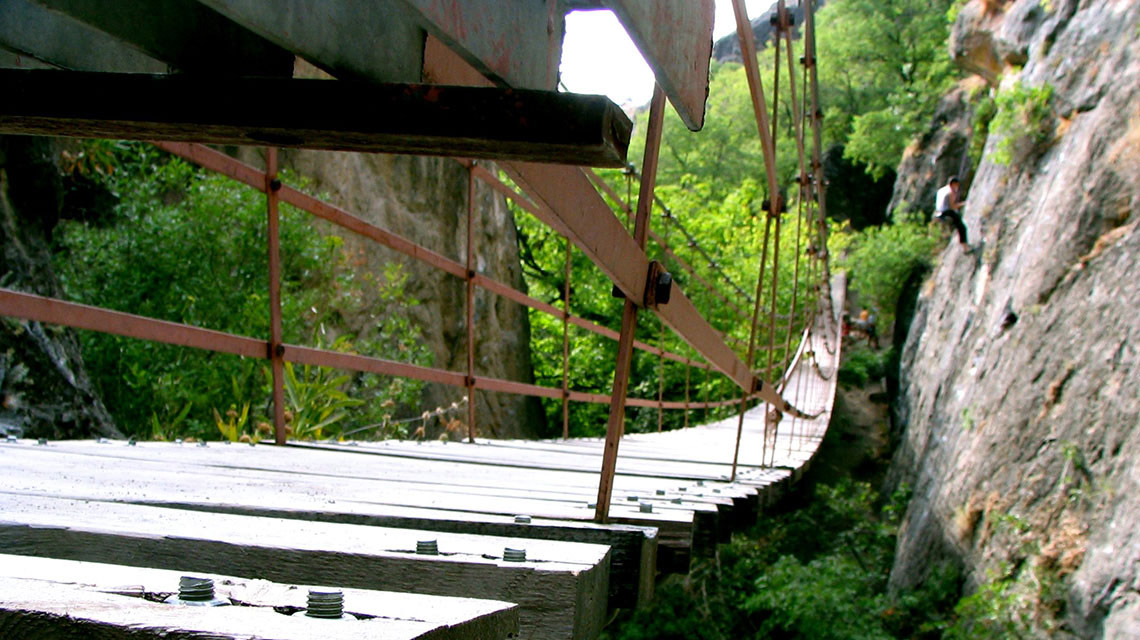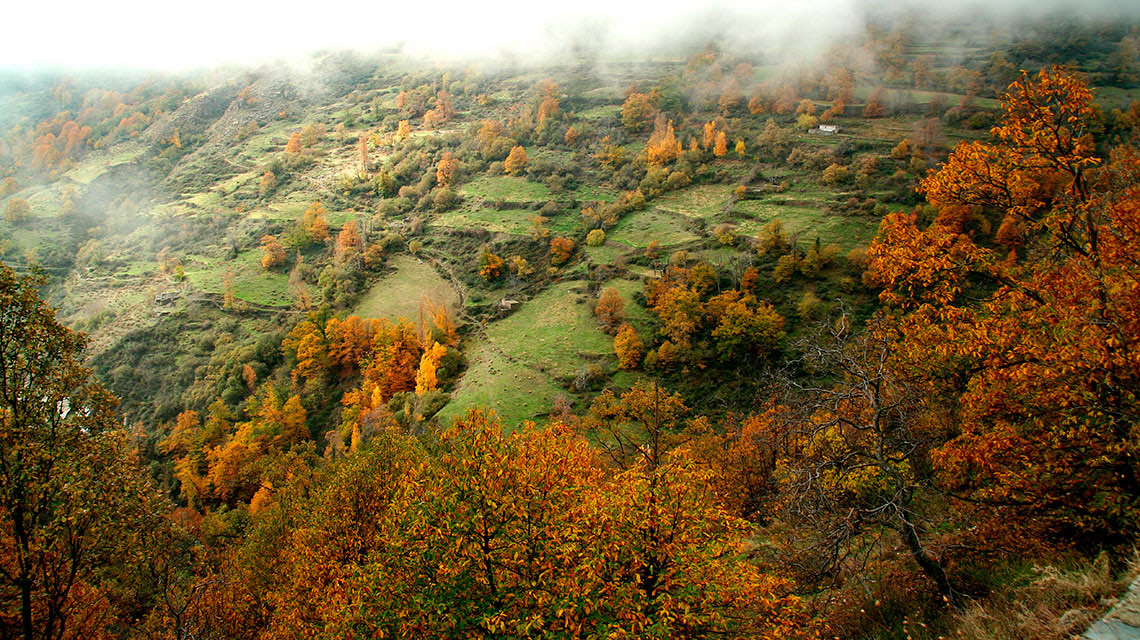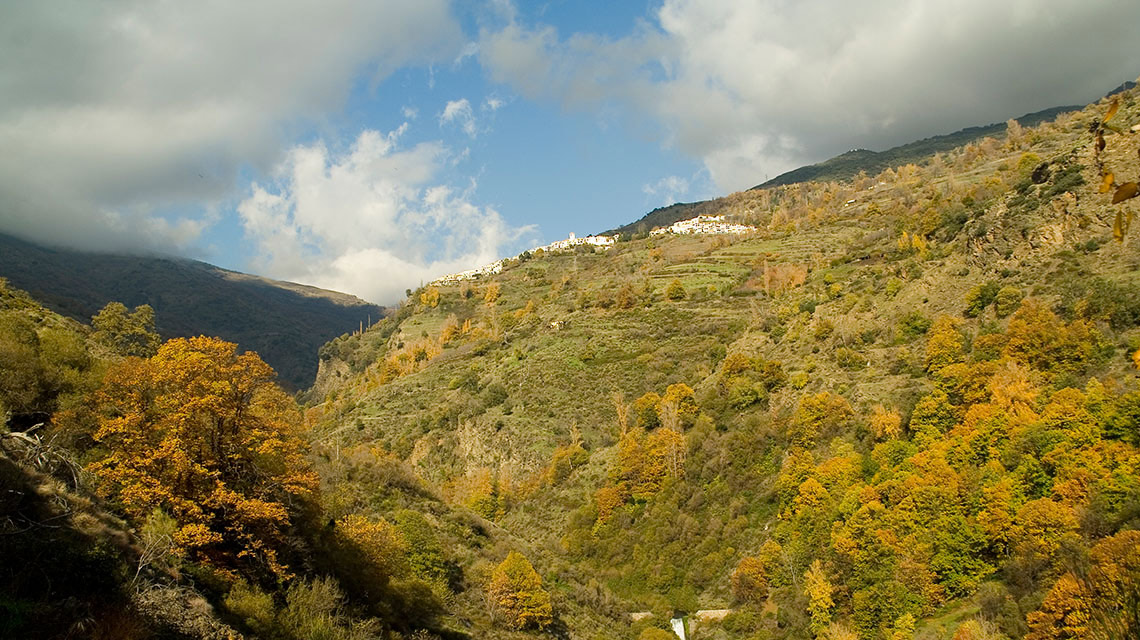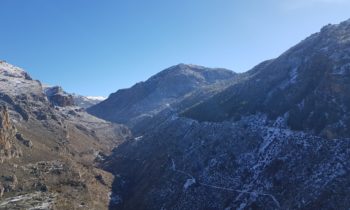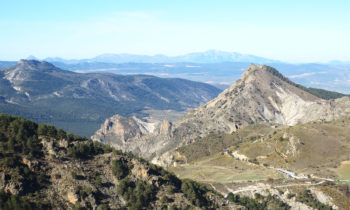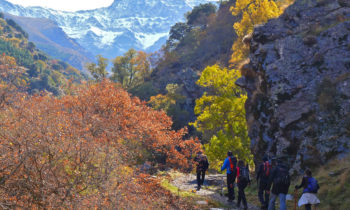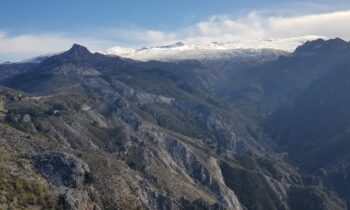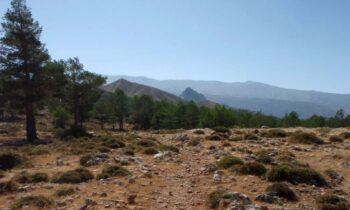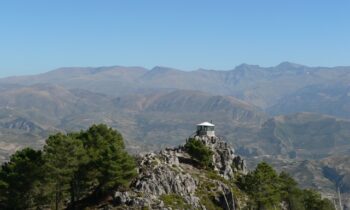Sierra Nevada, an impressive landscape of ecological and cultural value
The Sierra Nevada National Park combines scenic beauty and ecological importance. It is a dramatic, rugged and extensive mountain range, the highest in Europe after the Alps, and the highest on the Iberian Peninsula. Known by the Arabs as the “Sierra del Sol”, or ‘sunlit mountains’. it is home to some of the most valued flora in Europe. In 1986 it was declared a UNESCO Biosphere Reserve.
Located to the southeast of Granada, including the municipalities of Dilar, Güejar Sierra and Monachil (home of La Almunia del Valle), and extending to the eastern edge of Almería, Sierra Nevada has both gentle slopes, steep cliffs and the highest peaks on the Peninsula, the Mulhacén and the Veleta. It is a site of exceptional scenic value, shaped by its glacial origins, with forests and diverse areas of natural vegetation. The park also has rich hydrological resources, including several natural mineral springs. Fifteen of its peaks are over 3,000 metres high.
A landscape to fall in love with: The National Park has an exceptional diversity of ecosystems and specific landscapes, habitat for many plant and animal species. Elements that confer this last great natural wall in Southern Europe its own character and that have impressed illustrious writers and travellers since ever.
Botanical Paradise: This paradise is home to some of the most valued flora in Europe, providing an immense ecological value thanks to the more than 2,100 listed species, 175 of which are Iberian endemism.
Privileged habitat: The high mountains are home to a large number of wild animals and birds of prey such as the golden eagle and the griffon vulture. Among the mammals, the most emblematic is the ibex.
La Almunia del Valle has chosen some routes through the Sierra Nevada to help the visitor discover this wonderful environment. From our location, at 1000 meters of altitude, we can undertake walks with different levels of difficulty adapting to the physical faculties of the walker. High mountain routes that we will show our guests so that they enjoy unique days in the mountains. Simple walks by Ramblas or canyons of mighty rivers that will allow you to know the ancient legacy of our ancestors in the art of agriculture in mountain terraces and irrigation through meandering canyons by steep cliffs.
We can also organize guided tours. You will discover from the hand of naturalistic experts all the secrets that one of the environments with greater ecological diversity of the European continent keeps.
In the area of Monachil and below the ski resort. This is an easy and pleasant route. The route mainly follows dirt tracks. It will take you through the pastures to the Monachil River before returning through the old Diechar hydroelectric station. Part of the route follows the long distance footpath of Sulayr. The views of Sierra Nevada will not leave you indifferent.
Route along the slopes of Trevenque peak. One of the emblematic mountaintop peaks of the Sierra Nevada National Park.
La Espartera is a water trail, a path for biodiversity. The only place among kilometres of semi-arid sands where it is still possible to contemplate the flight of the swallows.
One of the most beautiful routes in the Sierra Nevada. On your way you will find abundant water and vegetation as well as knowing "the grandfather", a popular centennial chestnut tree in the area.
The views of the great peaks of Sierra Nevada will make you company good part of the route
The twin-peaked Boca de la Pesca (“the fish’s mouth”) is a tiny mountain in comparison with those around it, but from the top there are commanding views of the high peaks of the Sierra Nevada, Trevenque, the Dilar valley and the city of Granada down on the plain below. This walk is best in the late afternoon when the light is softer and you have more chance of some shade on the short but fairly steep climb.
This is a pleasant loop around Cerro Huenes, a small mountain on the edge of the Sierra Nevada. For the first part of the walk you have views down to the city of Granada, while later you can see up to the higher mountains to your south, including Veleta. Mostly the path runs through quite open countryside, but there are a few short sections of forest.
The Cruz de Viznar (“Viznar Cross”) is planted on a small but prominent hill, just far enough away from the Sierra Nevada to give you amazing views of the whole mountain range. The climb up is steady rather than steep, and the effort it takes to get to the top is richly rewarded. Makes a lovely evening walk, when the soft light brings out the subtle colours of the surrounding mountains.


